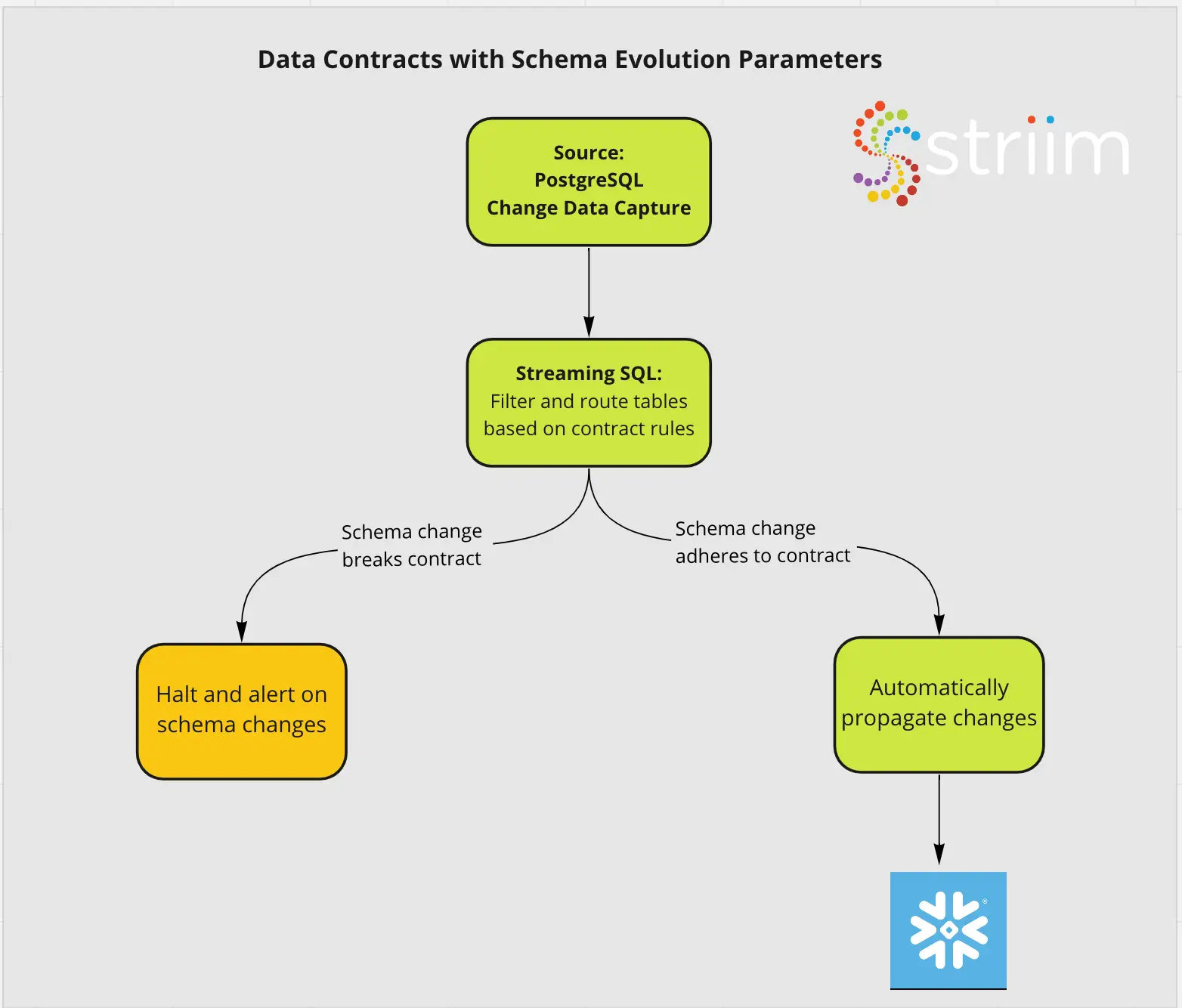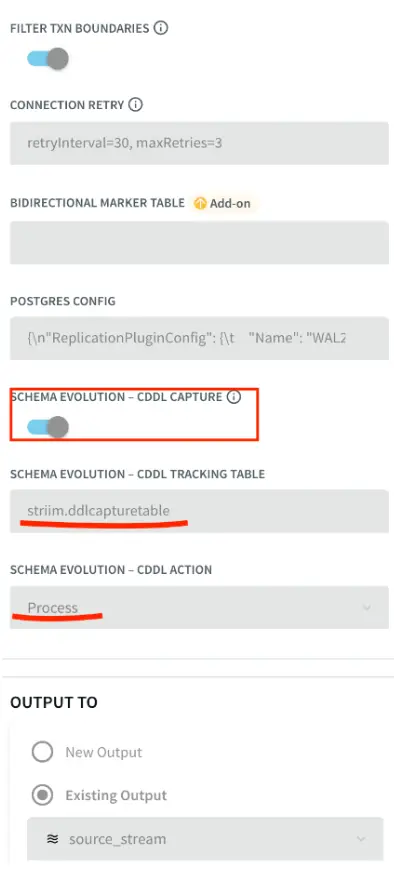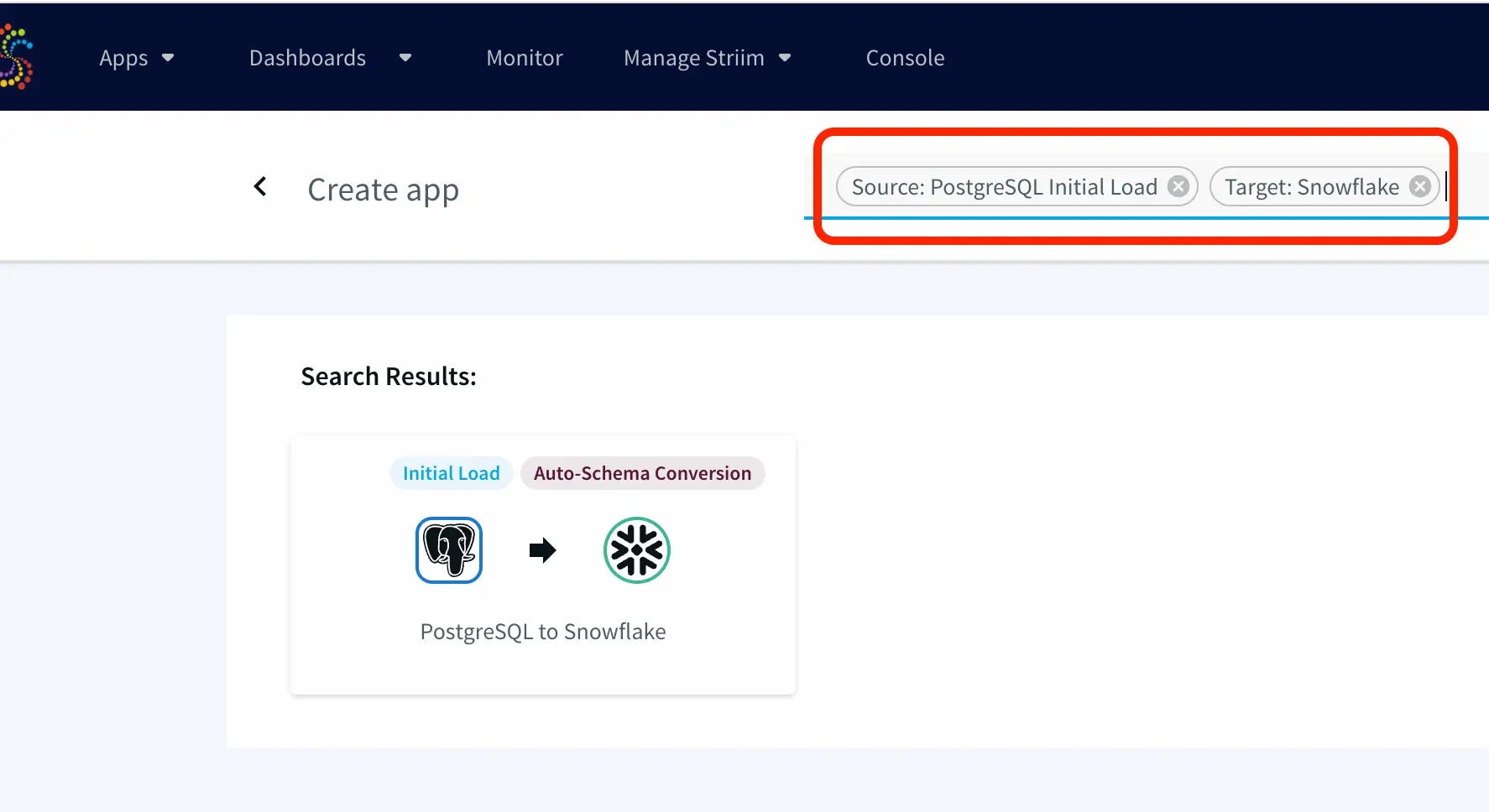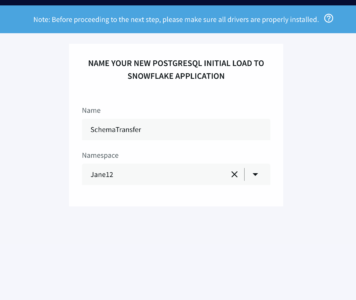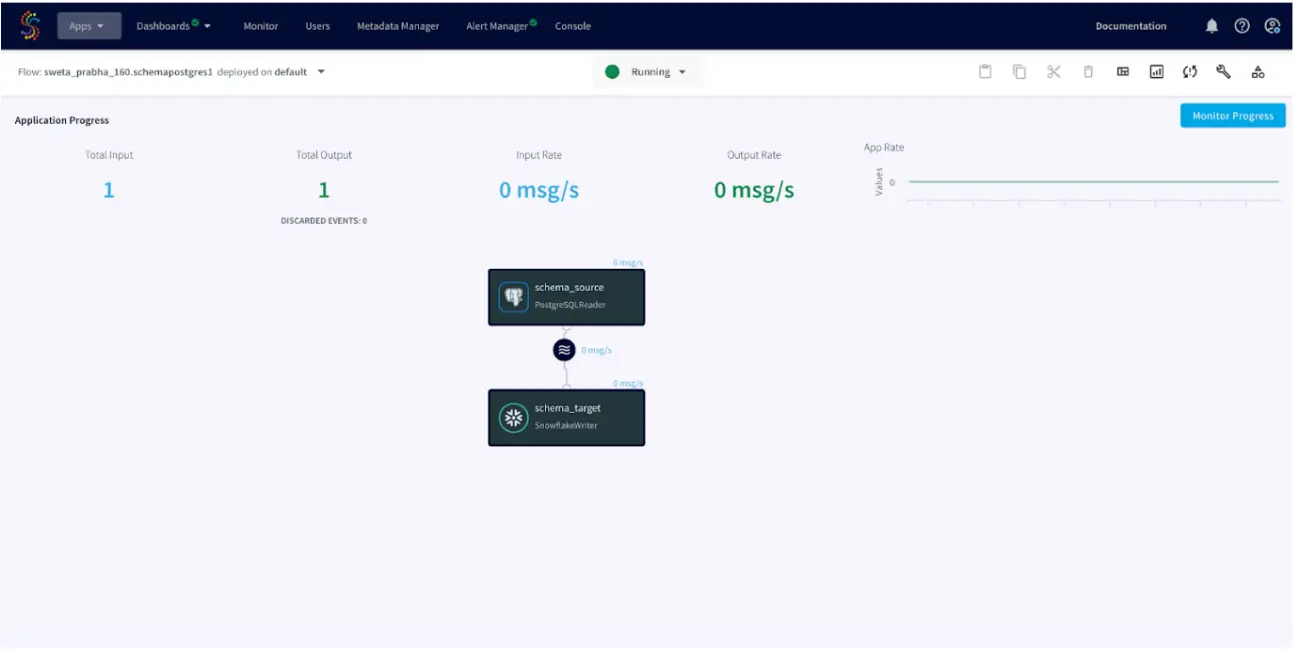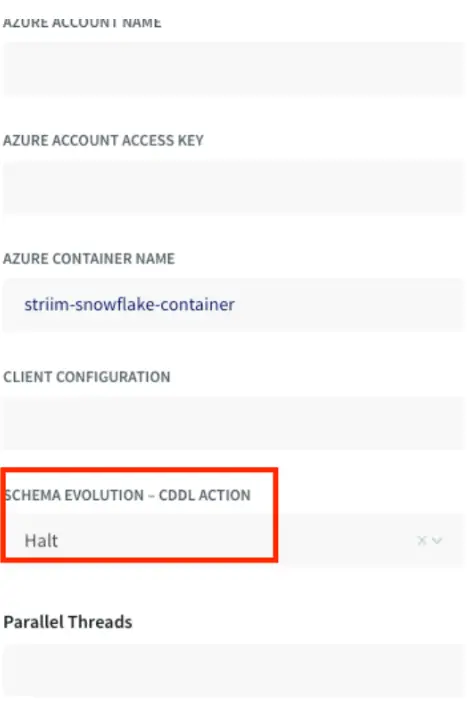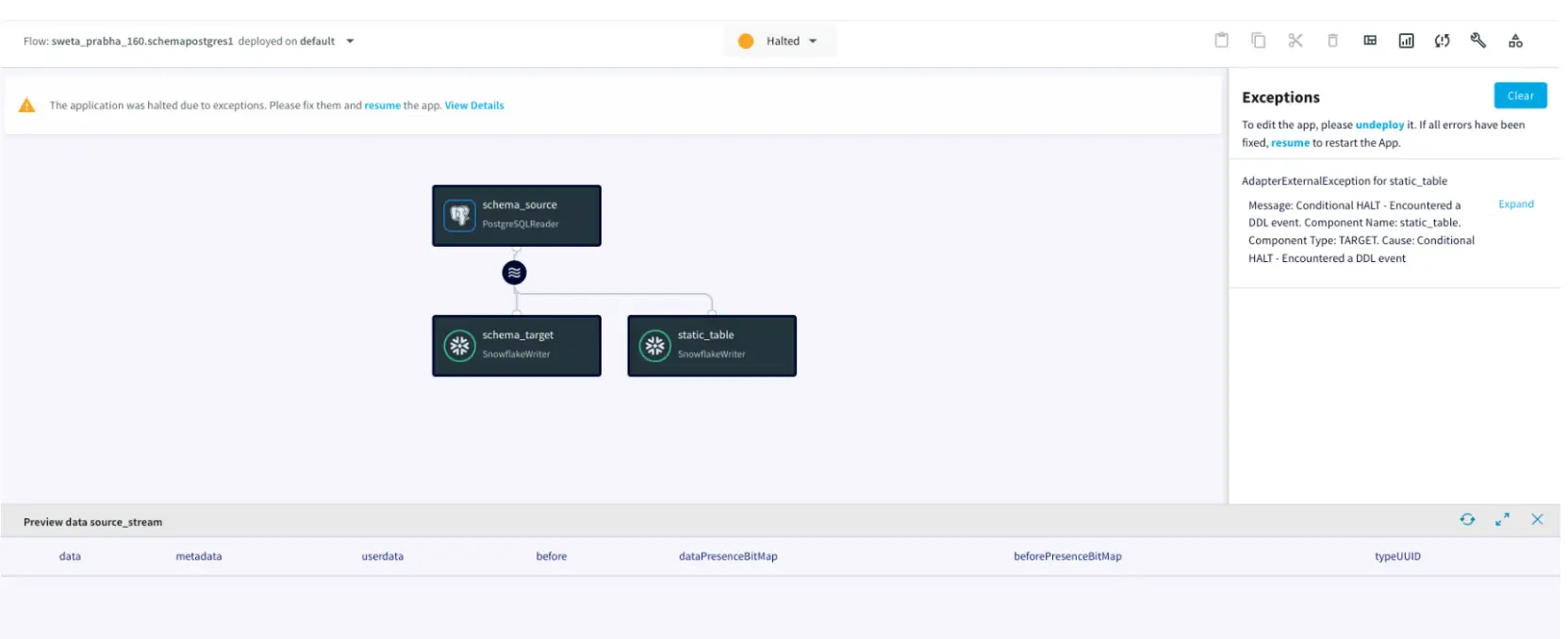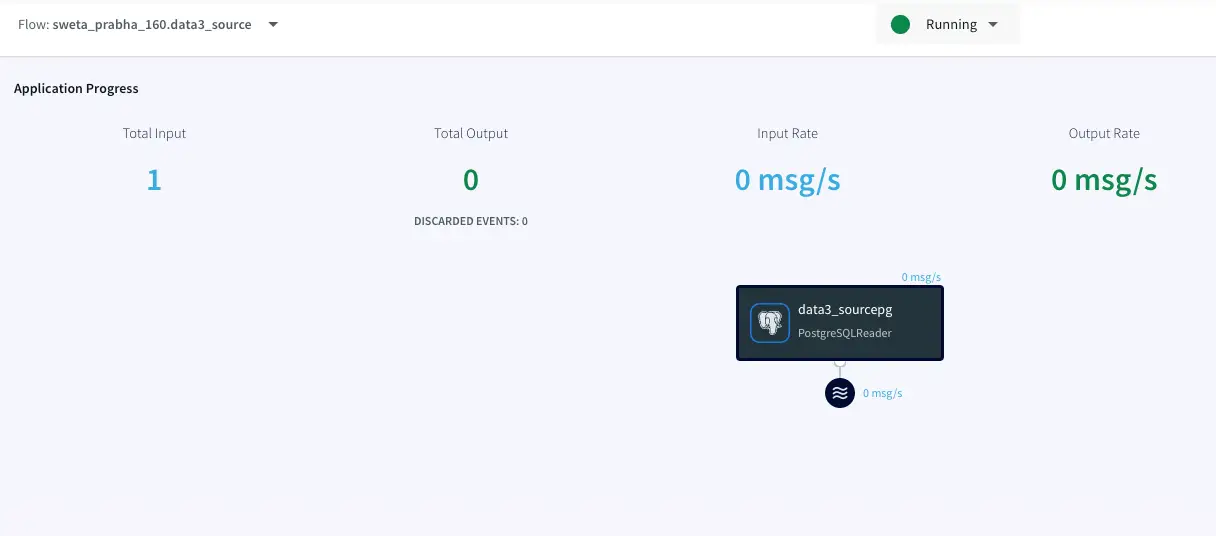PostgreSQL CDC to Snowflake data pipeline with Schema Evolution and Data Contracts
Use Striim to capture and propagate schema changes while performing real-time CDC from PostgreSQL to Snowflake
Benefits
Reduce data downtime by building pipelines resilient to schema changes
Create smart rules to keep schemas in sync without propagating problematic DDL
Automatically keep schemas and models in sync with your operational database.
Overview
Striim is a next generation unified data streaming product that offers change data capture (CDC) from popular databases such as Oracle, SQLServer, PostgreSQL and many others. To maximize uptime and operational success, Striim can enforce Data Contracts with Schema Evolution. Data Contracts are a way to align on the function of critical data pipelines with technical and business stakeholders. For instance, you may have an analytics team that wants to automatically add all new tables to their pipelines. On the other hand, you may have a software development team that will need to block and immediately be alerted on all new schema changes.
Data Contracts can also be applied on Data Freshness SLAs. These can be managed by Striim’s Smart Alerts. However we will go over that in a separate recipe. Here we are simply focussed on enforcing Data Contracts on schemas.
Striim can capture common DDL statements in the source table and replicate those changes to the target tables, or take other actions such as quiescing or halting the application. To know more about the supported CDC sources and adapters, please follow this link.
In one of our previous recipes, we have shown how to create a replica slot and cdc user to stream CDC changes from the PostgreSQL source table in real-time. In this tutorial we have configured a Striim app that captures schema evolution like CREATE TABLE, ALTER TABLE (eg. add column) and DROP TABLE and delegate the changes to the target through striim. In case of a new column, the target table updates with the new column. For CREATE and DROP TABLE, Striim’s message logs notify the new DDL change for any further action by the user. Please follow the steps below to configure your source database and Striim app for capturing schema evolution. Please refer to our github repository for all codes, datasets and tql file of this app.
Core Striim Components
PostgreSQL CDC: PostgreSQL Reader uses the wal2json plugin to read PostgreSQL change data. 1.x releases of wal2jon can not read transactions larger than 1 GB.
Stream: A stream passes one component’s output to one or more other components. For example, a simple flow that only writes to a file might have this sequence
Snowflake Writer: Striim’s Snowflake Writer writes to one or more existing tables in Snowflake. Events are staged to local storage, Azure Storage, or AWS S3, then written to Snowflake as per the Upload Policy setting.
Step 1: Create a Replication Slot and Replication User
For a CDC application on a postgres database, make sure the following flags are enabled for the postgres instance:
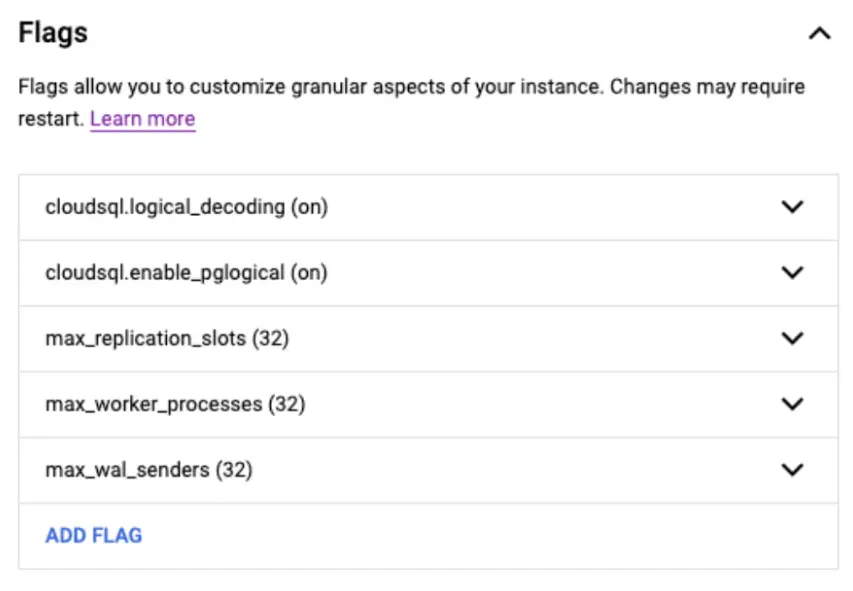
Create a user with replication attribute by running the following command on google cloud console:
CREATE USER replication_user WITH REPLICATION IN ROLE cloudsqlsuperuser LOGIN PASSWORD ‘yourpassword’;
Follow the steps below to set up your replication slot for change data capture:
Create a logical slot with wal2json plugin.
Step 2: Configure PostgreSQL CDDL Capture Procedure and CDDL Tracking Table
CDDL stands for “Common Data Definition Language”. Striim supports Create Table, Alter Table (Add, Modify, Drop, Add primary key and adding unique constraints) and Drop Table for handling schema evolution or CDDL.The source adapter must be able to capture the CDDLs executed on the interested tables and schema and the target adapter must be able to process DDL WAEvents sent by the source adapter.
For PostgreSQL CDDL Capture procedure and Tracking, a set of SQL scripts has to be executed on the source database by the customer with the superuser role. Firstly, the schema is created if it does not already exist and an empty table with DDL Capture fields is created that will record the DDL changes.
CREATE SCHEMA IF NOT EXISTS striim;
CREATE TABLE IF NOT EXISTS striim.ddlcapturetable
(
event TEXT,
tag TEXT,
classid OID,
objid OID,
objsubid INT,
object_type TEXT,
schema_name TEXT,
object_identity TEXT,
is_extension BOOL,
query TEXT,
username TEXT DEFAULT CURRENT_USER,
db_name TEXT DEFAULT Current_database(),
client_addr INET DEFAULT Inet_client_addr(),
creation_time TIMESTAMP DEFAULT now()
);
The next step is to write a PostgreSQL function that collects DDL change logs from pg_stat_activity and inserts into ddlcapturetable. The function shown below is called ‘ddl_capture_command()’ which is executed inside two event triggers in the next section.
GRANT USAGE ON SCHEMA striim TO PUBLIC;
GRANT SELECT, INSERT ON TABLE striim.ddlcapturetable TO PUBLIC;
create or replace function striim.ddl_capture_command() returns event_trigger as $$
declare v1 text;
r record;
begin
select query into v1 from pg_stat_activity where pid=pg_backend_pid();
if TG_EVENT='ddl_command_end' then
SELECT * into r FROM pg_event_trigger_ddl_commands();
if r.classid > 0 then
insert into striim.ddlcapturetable(event, tag, classid, objid, objsubid, object_type, schema_name, object_identity, is_extension, query)
values(TG_EVENT, TG_TAG, r.classid, r.objid, r.objsubid, r.object_type, r.schema_name, r.object_identity, r.in_extension, v1);
end if;
end if;
if TG_EVENT='sql_drop' then
SELECT * into r FROM pg_event_trigger_dropped_objects();
insert into striim.ddlcapturetable(event, tag, classid, objid, objsubid, object_type, schema_name, object_identity, is_extension, query)
values(TG_EVENT, TG_TAG, r.classid, r.objid, r.objsubid, r.object_type, r.schema_name, r.object_identity, 'f', v1);
end if;
end;
$$ language plpgsql strict;
Once the ddlcapture table is created and ddl_capture_command() function is defined, two event triggers are executed as follows.
CREATE EVENT TRIGGER pg_get_ddl_command on ddl_command_end EXECUTE PROCEDURE striim.ddl_capture_command();
CREATE EVENT TRIGGER pg_get_ddl_drop on sql_drop EXECUTE PROCEDURE striim.ddl_capture_command();
Step 3: Create the CDC app that handles Schema Evolution on Striim SaaS
There is an additional CDDL configuration in source and target which was not required in traditional CDC DML streaming app. For the CDDL configuration in the source database, click on ‘Show Advanced Setting’ as shown below.
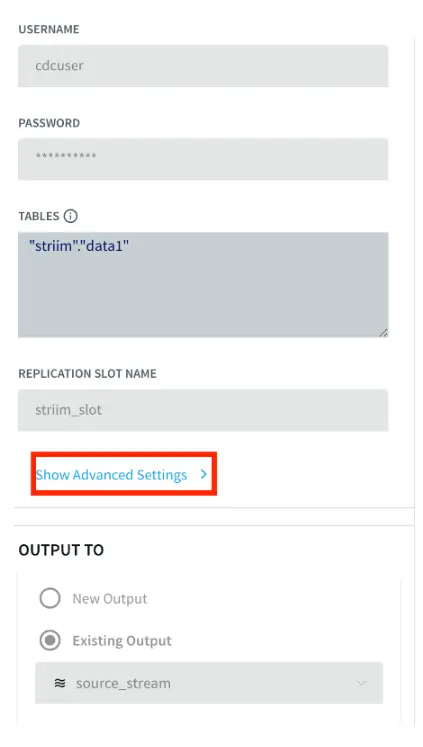
For the Snowflake target under ‘Show Advanced Setting’, ‘Process’ is selected under CDDL ACTION. This ensures the ALTER TABLE changes in the source table are replicated into the target table in Snowflake.
Note: you must create tables in Snowflake yourself manually or use Striim’s schema creation wizard.
To transfer your schema and tables from postgres to snowflake using schema creation wizard, follow the steps shown below:
Step 1: Create a new app with Postgres Initial Load as source and Snowflake as target
Step 2: Follow the app wizard and select your schema and tables in your Postgres source
Step 3: Configure your Snowflake wizard as shown below
Step 4: Select Schema Migration to migrate your schema from Postgres to Snowflake
Step 4: Run the App and check the message logs and target table for any DDL changes.
For this tutorial, I have used a sample table ‘data1’ containing two columns ‘Name’ and ‘Salary’. When a new column ‘Sex’ is added, it is streamed and the target table in snowflake is updated.
Enable ‘SCHEMA EVOLUTION-CDDL CAPTURE’ and enter the name of the CDDL TRACKING TABLE that we created in Step 2. The CDDL ACTION property is ‘Process’.
For the Snowflake target under ‘Show Advanced Setting’, ‘Process’ is selected under CDDL ACTION. This ensures the ALTER TABLE changes in the source table are replicated into the target table in Snowflake.
When we add a new table ‘data3’ into the schema, DDL Operation is ignored but the message log notifies the user about the new change. The metadata from the message log can be used to set alert for different types of DDL operations
Static Tables
There are four types of action labels for CDDL supported source and target adapters. Striim can also handle data replication sources that contain tables with static schema. The four actions that can be executed on capturing CDDLs are:
Process: This is the default action behavior that parses the DDL query and streams into the target table
Ignore: The DDL events will be captured and stored into internal metadata repository but will not be sent to the downstream consumers
Quiesce: When a DDL event is captured on the interested tables, source adapters will issue the Quiesce command and DDL operation will not be sent to downstream consumers. This action label is specific to Source Adapters only.
Halt: On receiving DDL action from upstream, the adapters will halt the app. This action is important when we want to halt the application when DDL is executed on static tables.
Here is an example showing a striim app with one static table. Since there are multiple tables in the source, we specify the action label ‘HALT’ on the target adapter.
You can also create a separate app for static tables that reads from the same source stream. This would not halt the data streams for other tables while a DDL is executed on static tables. Configure a separate app with the same source stream as follows. The source app is still running while the app containing the target app with a static table is halted.
Setting Up Striim app to capture Schema Evolution
Step 1: Create Replication Slot and Replication User on Postgres
Follow this recipe to create a Replication Slot and user for Change Data Capture. The replication user reads change data from your source database and replicates it to the target in real-time.
Step 2: Setup CDDL Capture Procedure and CDDL Tracking Table
Follow the recipe to configure PostgreSQL CDDL Capture Procedure and CDDL Tracking Table. You can find the sql queries in our github repository
Step 3: Create CDC app on Striim server
Create the CDC app that handles Schema Evolution on Striim SaaS as shown in the recipe
Step 4: Deploy and Run the Striim app
Run the App and check the message logs and target table for any DDL changes.
Wrapping Up: Start your Free Trial Today
Our tutorial showed you how to handle schema evolution in PostgreSQL database and stream the CDC to Snowflake target, a leading cloud data warehouse through Striim SaaS. By constantly moving your data into Snowflake, you could track the schema changes as well as build analytics or machine learning models, all with minimal impact to your current systems. You could also start ingesting and normalizing more datasets with Striim to fully take advantage of your data.
As always, feel free to reach out to our integration experts to schedule a demo, or try Striim for free here.
Tools you need

Striim
Striim’s unified data integration and streaming platform connects clouds, data and applications.

PostgreSQL
PostgreSQL is an open-source relational database management system.

Snowflake
Snowflake is a cloud-native relational data warehouse that offers flexible and scalable architecture for storage, compute and cloud services.


















